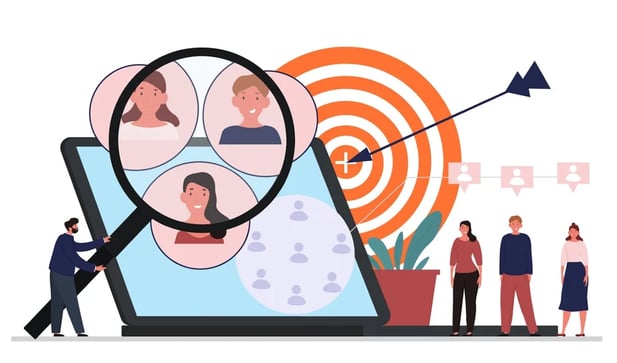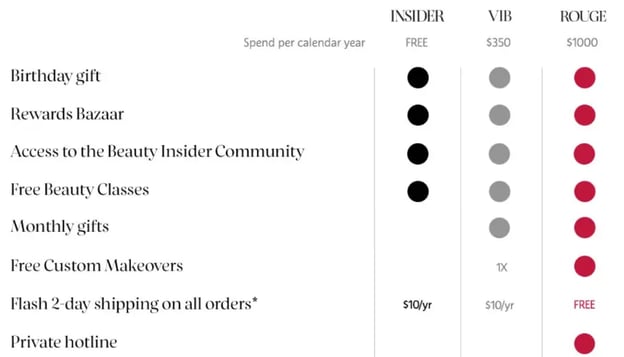Demographic Segmentation in ecommerce: Understand Your Customers Better
Customer segmentation is all about the process of dividing a big client base into more manageable, homogeneous groups based on shared traits or behaviors. To better understand the demands, preferences, and behaviors of various customer groups and to adjust marketing strategies and customer experiences accordingly, customer segmentation is used.
There is no one size fits all approach to client segmentation models. Every business is different, and everyone has a distinct customer base.
Customers can be divided into groups according to a range of criteria, such as demographics (age, gender, income, or education), location, psychographics (personality, values, or lifestyle), customer behavior (such as purchase history, product usage, or engagement with a brand), and more.
In this article, we will be discussing the best strategies of demographic segmentation for your eCommerce business. For eCommerce businesses, demographic segmentation is a crucial strategy for dividing their consumer bases based on age, gender, income, education, occupation, family status, and more. Additionally, demographic segmentation can assist online retailers in finding untapped markets and creating new goods and services that target particular clientele groups. For instance, an online store catering to parents might create a range of products for infants and kids or provide family-friendly pricing.
Table of Content:
- What is Demographic Segmentation In eCommerce?
- 8 Benefits of Using Demographic Segmentation In eCommerce
- How To Use Demographic Segmentation In eCommerce
- Interesting Examples of Using Demographic Segmentation In eCommerce
- Automate Your Segmentation Now!
What is Demographic Segmentation In eCommerce?
 Image source: yieldify.com
Image source: yieldify.com
The process of segmenting a customer base of an eCommerce business into smaller groups based on demographic characteristics, including age, gender, income, education, occupation, family status, and more, is known as demographic segmentation. This kind of segmentation is used to more fully comprehend the requirements and preferences of various consumer groups and to modify marketing plans and client interactions accordingly.
For instance, an online business that serves young adults would advertise its products and services on Instagram and Snapchat, whereas an online store that caters to elderly individuals might concentrate on email marketing and customer care. Similarly to this, an online store catering to high-income clients would offer upscale goods and services, while an online store catering to people on a tight budget might place an emphasis on accessibility and deals.
8 Benefits of Using Demographic Segmentation In eCommerce
Dividing your customers into smaller groups can help you better serve them and personalize their experience, which can have a positive impact on your brand. Explore those 8 benefits which you can enjoy when you start using demographic segmentation strategies:
1- Better comprehension of consumer preferences and demands
By segmenting clients according to demographic characteristics, eCommerce enterprises may better comprehend the needs and wants of various customer groups. In order to better fulfill the unique demands of each group, organizations can use this information to adjust their marketing tactics and consumer experiences.
2- More personalized and effective marketing experience
By segmenting their consumer bases based on demographics, eCommerce companies may develop marketing messages that are more personalized and targeted for particular customer segments. This can increase conversion rates and help businesses market more effectively.
3- Increased Customer Loyalty
eCommerce organizations can increase customer satisfaction and loyalty by customizing marketing messaging and customer experiences to certain customer groups. Customers are more likely to remain loyal to a brand when they believe that it recognizes and caters to their unique wants and preferences.
4- Increased Sales, Revenue & ROI
Demographic segmentation can assist eCommerce organizations in locating untapped markets and in creating new goods and services that are tailored to particular client groups. By broadening their consumer base and providing goods and services that better fit the demands of each customer group, businesses can improve sales and revenue.
5- Competitive Edge
By adopting demographic segmentation, eCommerce companies can better understand their clients and cater their offerings to suit their individual requirements and preferences. This might assist organizations in standing out from rivals and acquiring new clients.
6- Product Development
Product creation and development can be totally improved as a result of demographic segmentation, which can be used by eCommerce companies to find new product opportunities and create new items that better cater to particular customer groups. This can help you customize something that speaks directly to your audience's needs.
7- Better Customer Service
eCommerce companies may offer more individualized and efficient customer service by understanding the needs and preferences of various consumer groups.
8- Boost Customer Satisfaction
Consumer satisfaction and happiness can be raised and boosted by eCommerce enterprises by catering to the unique demands and preferences of various consumer segments.
How To Use Demographic Segmentation In eCommerce

Being super crucial, demographic segmentation can make a huge difference in your brand positioning. Here is how to start applying it:
1- Data Collection
Data collection is the initial step in implementing demographic segmentation for your business. Age, gender, income, education, occupation, and other pertinent details can be included in this.
2- Data Analysis
Analyze the data after it has been acquired to find patterns and trends among various client groups. Look for shared traits that you may utilize to divide up your customer group.
3- Segmenting your clientele
After you've determined the traits that your clientele share in common, divide them into several categories depending on those traits. For instance, you might divide your clientele into different age brackets, income levels, or genders.
4- Develop Personalized Marketing Messages
Create targeted marketing messages for each segment of your client base after segmenting your consumer base. This can be done by developing social media campaigns, targeted ads, and emails that are specifically tailored to the wants and preferences of each demographic.
5- Tailor a Customized Experience
Customize your consumer experience by using demographic segmentation to address the wants and needs of each group. For instance, you might provide various product recommendations or discounts based on the customer's age or economic level.
6- Analyze your outcomes
Assess the success of your demographic segmentation efforts. Determine which customer segments are reacting to your marketing messages, and customer experiences the best using data and analytics. Utilize this knowledge to gradually improve your segmentation and marketing methods. This can help you make better future decisions and avoid past mistakes.
** Learn How to Create a Customer Segmentation Strategy and Boost Sales.
Interesting Examples of Using Demographic Segmentation In eCommerce
Here are a few intriguing examples of how demographic segmentation is used in eCommerce:
1- Personalized product recommendations from Amazon
Each customer's product recommendations are tailored by Amazon based on demographic segmentation. Amazon is able to suggest goods that are most likely to appeal to each client by examining data about their browsing and buying history.
 Image source: rejoiner.com
Image source: rejoiner.com
2- Sephora Loyalty Program
The reward program at Sephora is tailored to the needs and desires of various client groups using demographic profiling. For instance, based on a customer's purchasing level and beauty preferences, the business's "Beauty Insider" program gives various prizes and benefits.

** Check: 5 Mistakes To Avoid With Your eCommerce Customer Segmentation Strategy
Automate Your Segmentation Now!
You won't have to manually filter and analyze client groups any longer to target your audience, thanks to Convertedin's automated segmentation engine.
To focus your messaging across all Convertedin channels, segmentation is a simple tool to use. Our segmentation allows you to select your target based on a range of transactional events and purchasing patterns. Make sure that your retention strategies are targeted at your most valuable clients. Manual imports are no longer necessary because your saved segments will update immediately.


